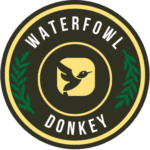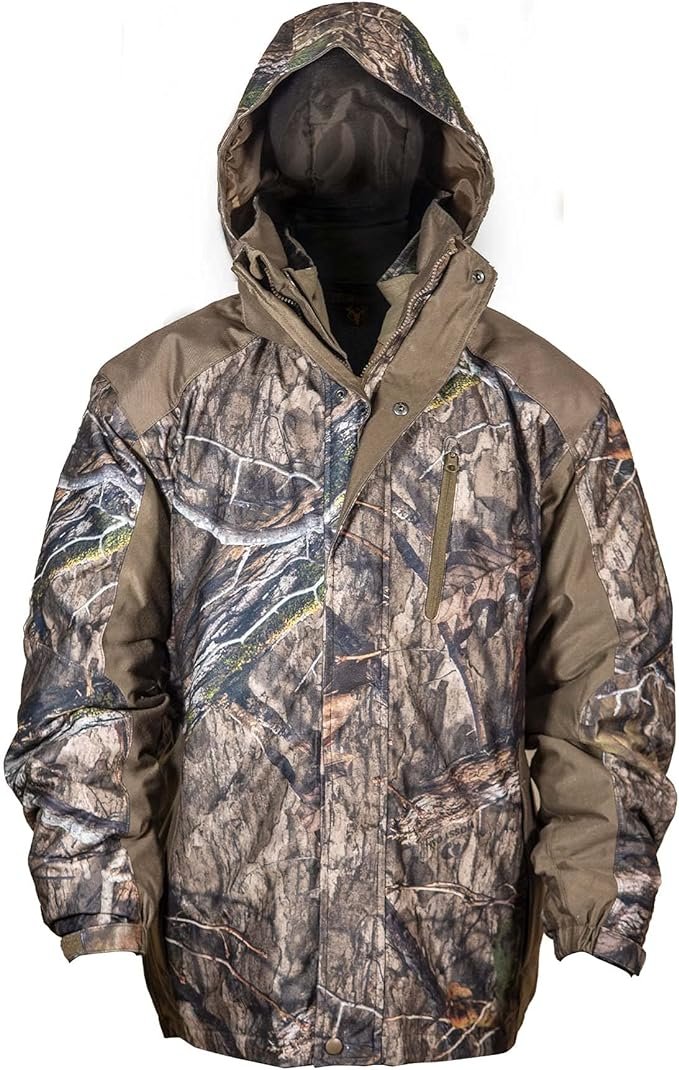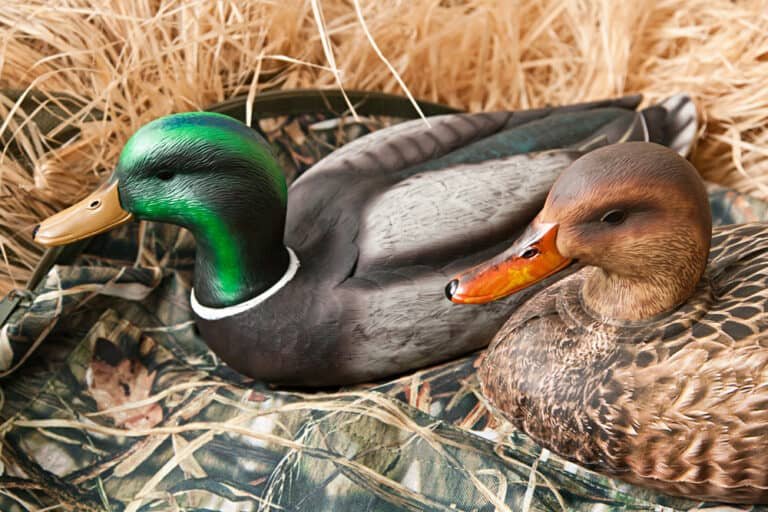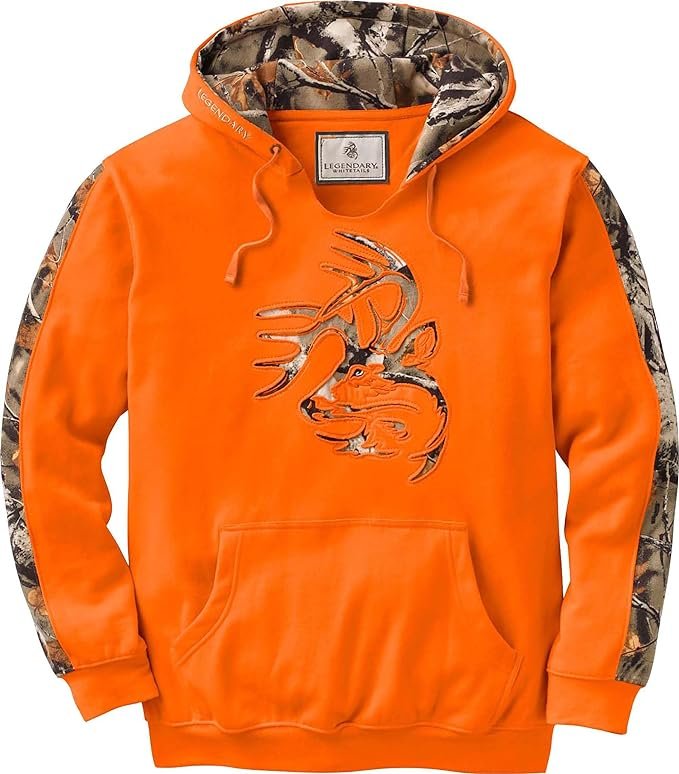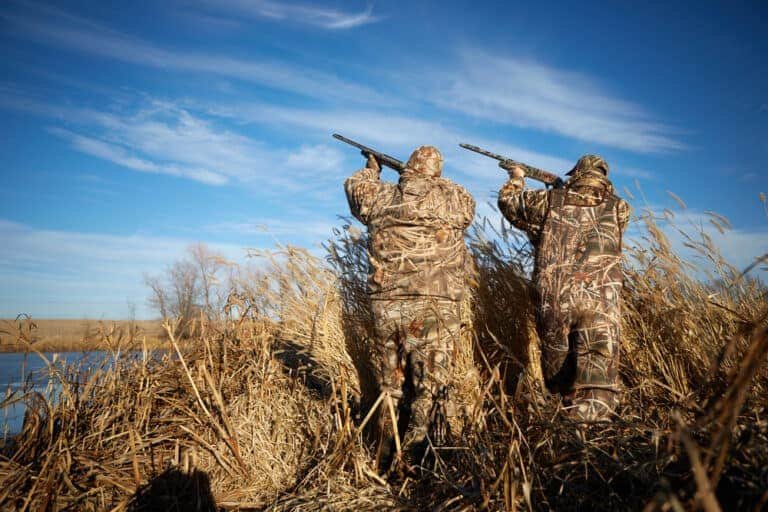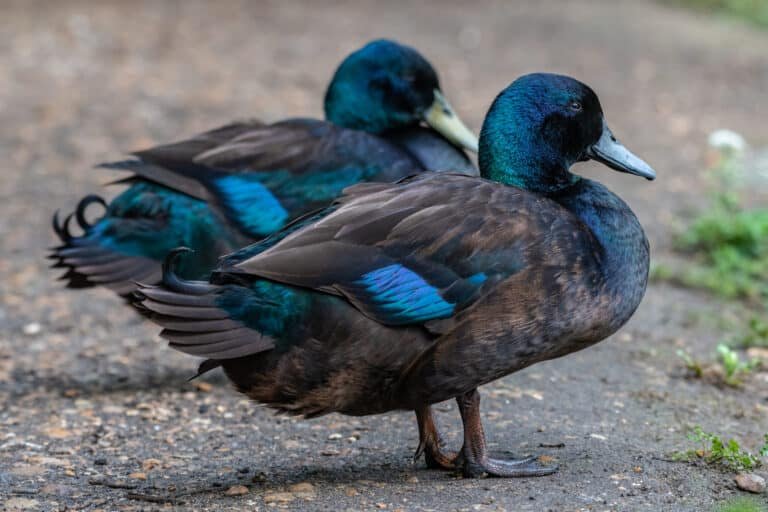Mastering Waterfowl Dog Training: From Puppy to Professional
Waterfowl dog training is crucial for a successful hunting experience and the safety and well-being of the dog and its human hunting companions. A well-trained waterfowl dog can retrieve downed birds efficiently, navigate through various challenging terrains, and exhibit exceptional obedience in the field. This article explores the stages of waterfowl dog training, taking you on a journey from puppyhood to professional-level training.
Brief Overview of the Importance of Waterfowl Dog Training
The importance of training a waterfowl dog cannot be overstated. Whether you are an avid waterfowl hunter or enjoy spending time outdoors with your canine companion, having a well-trained dog by your side enhances your hunting success and overall experience. A properly trained waterfowl dog possesses impeccable obedience, strong retrieving abilities, advanced scenting capabilities, and situational awareness – all vital for successful hunting trips.
Training instills discipline in the dog and helps establish clear communication between the handler and the canine companion during hunts. By investing time and effort into training, you can expect improved performance from your hunting partner while minimizing risks associated with uncontrolled behavior or lack of skills in challenging situations encountered during waterfowl hunts.
Explanation of the Stages Involved in Waterfowl Dog Training: From Puppy to Pro
Training a waterfowl dog involves several stages that gradually build upon one another to develop a proficient hunting companion. Understanding these stages will help you structure your training approach effectively:
1. Puppyhood: This stage focuses on building a strong foundation for future training endeavors. It involves selecting an appropriate breed with desired characteristics for waterfowl hunting and introducing basic socialization techniques and initial obedience commands.
2. Basic Training: Once puppies have grown into young dogs, basic training comes into play. This stage focuses on developing essential skills such as retrieving games, command reinforcement, and advanced obedience training. Dogs are introduced to retrieving objects and gradually exposed to water retrieves to enhance their swimming abilities.
3. Advanced Training: As the dog progresses, advanced training prepares them for hunting scenarios by introducing gunshots and decoys. This stage focuses on simulating hunting situations in controlled environments, including setting up mock hunting blinds or using layout blinds.
Dogs practice marking multiple falls and handling blind retrieves. With dedication, patience, and consistency throughout these stages of training, your waterfowl dog will evolve into a highly skilled companion capable of navigating the challenges inherent in waterfowl hunting.
Puppyhood – Building a Strong Foundation
Selecting the right breed for waterfowl hunting
When training a waterfowl dog, choosing the right breed is crucial. While various breeds are suitable for this purpose, some of the most popular ones include Labrador Retrievers, Chesapeake Bay Retrievers, and Golden Retrievers.
Labrador Retrievers are considered exceptional waterfowl dogs due to their natural retrieving instincts and strong swimming ability. On the other hand, Chesapeake Bay Retrievers excel in cold-water conditions with their thick coats and sturdy build.
Golden Retrievers possess an ideal combination of intelligence, willingness to please their owners, and love for water-retrieving activities. Researching these breeds thoroughly before considering factors such as temperaments, energy levels, and health clearances is important.
Highlighting specific traits and characteristics to look for in a puppy
When selecting a puppy for waterfowl training purposes, there are specific traits and characteristics that potential owners should look out for. Firstly, a strong prey drive is essential as it forms the foundation of a successful waterfowl dog.
Puppies with intense curiosity towards objects or moving items exhibit signs of a solid prey drive. Additionally, good overall health is crucial because training requires physical endurance.
When choosing a puppy, a well-built body structure with no signs of joint or hip problems should be considered. Furthermore, puppies with intelligence and eagerness to learn tend to excel in training exercises.
Socialization and basic obedience training
Socialization plays an integral role in shaping the behavior of a waterfowl dog during its formative stages. Exposing the puppy to various environments early on helps them become comfortable with different sights, sounds, smells, and textures they may encounter while hunting alongside their owners later on. It is recommended to introduce the puppy to different people, animals, and situations in a controlled and positive manner.
Basic obedience training should also commence during this stage, teaching commands like sit, stay, come, and heel. Consistency, positive reinforcement techniques such as treats or praise, and short training sessions will help establish a strong foundation of obedience in the puppy.
By selecting the right breed with suitable traits for waterfowl hunting, highlighting important characteristics in a puppy, and implementing socialization and basic obedience training methods early on, owners can build a solid foundation for their waterfowl dog’s future success. This stage sets the groundwork for further advanced training that will be covered in subsequent sections of this comprehensive guide.
Basic Training – Developing Essential Skills
Introduction to retrieving games and exercises
When embarking on training a waterfowl dog, introducing the concept of retrieving is paramount. This stage is the foundation for building a strong bond between the handler and the dog. Retrieving games and exercises are vital in stimulating enthusiasm for retrieving objects.
You tap into your dog’s innate instinct to chase and retrieve by incorporating interactive activities such as fetch or hide-and-seek with dummies. These games enhance your dog’s physical prowess and foster mental stimulation, ensuring an engaged learner.
Using dummy retrieves to build enthusiasm for retrieving objects
To cultivate a genuine passion for retrieving your waterfowl dog, utilizing dummy retrieves can prove remarkably effective. Start by selecting appropriately sized dummies that resemble birds commonly encountered during hunts. Begin with short distances and gradually increase the distance as your dog becomes more confident.
Encourage excitement by using praise, treats, or verbal cues upon successful retrieves. The repetition of dummy retrieves allows your dog to become familiar with holding and delivering objects gently, establishing essential skills required in real hunting scenarios.
Incorporating water retrieves gradually for swimming skills development
As waterfowl hunting often occurs near bodies of water, it is crucial to incorporate water retrieves into your training regimen gradually. Start by introducing shallow ponds or lakes where your pup can comfortably wade in while fetching dummies from floating platforms or buoyant objects like decoys.
Over time, expand their comfort zone by increasing depth and challenging them with longer distances across open water. This gradual approach nurtures their swimming abilities while instilling confidence in handling aquatic environments—a fundamental skill set for any proficient waterfowl retriever.
Command reinforcement and advanced obedience training
In parallel with the development of retrieving skills, reinforcing crucial commands and advancing obedience training is crucial for a well-rounded waterfowl dog. Focus on teaching commands like “fetch,” “drop it,” and “leave it” to ensure reliable retrieval behavior. Consistency, patience, and positive reinforcement are key when instilling these commands.
Additionally, strengthening recall abilities amidst distractions is vital. By practicing recalls in various environments, particularly in the presence of enticing distractions like food or other animals, you cultivate an unwavering response to your command—ultimately ensuring the safety and precision required during hunting expeditions.
Advanced Training – Preparing for Hunting Scenarios
Introducing gunshots and decoys
As your waterfowl dog progresses from basic training to advanced stages, it becomes essential to acclimate them to elements commonly encountered during hunts. Gradually introducing gunshots is paramount in desensitizing them to loud noises associated with hunting without causing anxiety or fear. Start by playing soft recordings of distant gunshots while retrieving activities, gradually increasing the volume.
Simultaneously, familiarize your dog with decoys as visual cues used during retrieves. Encourage interaction and reward their curiosity when approaching or swimming around decoys—this association sets the stage for successful hunting scenarios.
Simulating hunting scenarios in controlled environments
Simulating various scenarios within controlled environments proves invaluable to preparing your waterfowl dog for the intricacies of real hunting situations. Setting up mock hunting blinds or utilizing layout blinds helps familiarize them with concealing structures used during hunts while refining their ability to stay still until commanded otherwise.
Furthermore, practice marking multiple falls by having them focus on specific areas where birds land after being shot down—a skill that greatly aids in efficient retrieval during actual hunts. Additionally, handling blind retrieves—where your dog retrieves birds they haven’t visually marked—enhances their ability to follow precise directions, highlighting the importance of obedience and trust in challenging hunting scenarios.
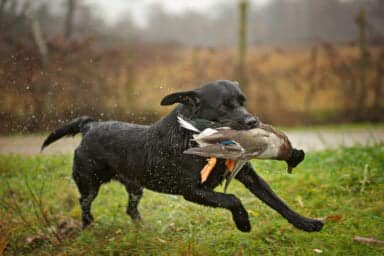
Conclusion – Waterfowl Dog Training
As you train a waterfowl dog from a playful puppy to a skilled professional, remember that building a strong foundation through basic training is key. Introducing retrieving games and exercises, incorporating water retrieves gradually, and reinforcing commands lay the groundwork for advanced stages.
The subsequent phases involve acclimating your canine companion to gunshots and decoys while simulating realistic hunting scenarios in controlled environments. By following this comprehensive training approach, you cultivate exceptional skills and a deep bond with your waterfowl dog.
This bond will undoubtedly lead to memorable moments of successful hunts for years to come. Embrace this fulfilling endeavor with patience, dedication, and a shared passion for the art of waterfowl hunting.
